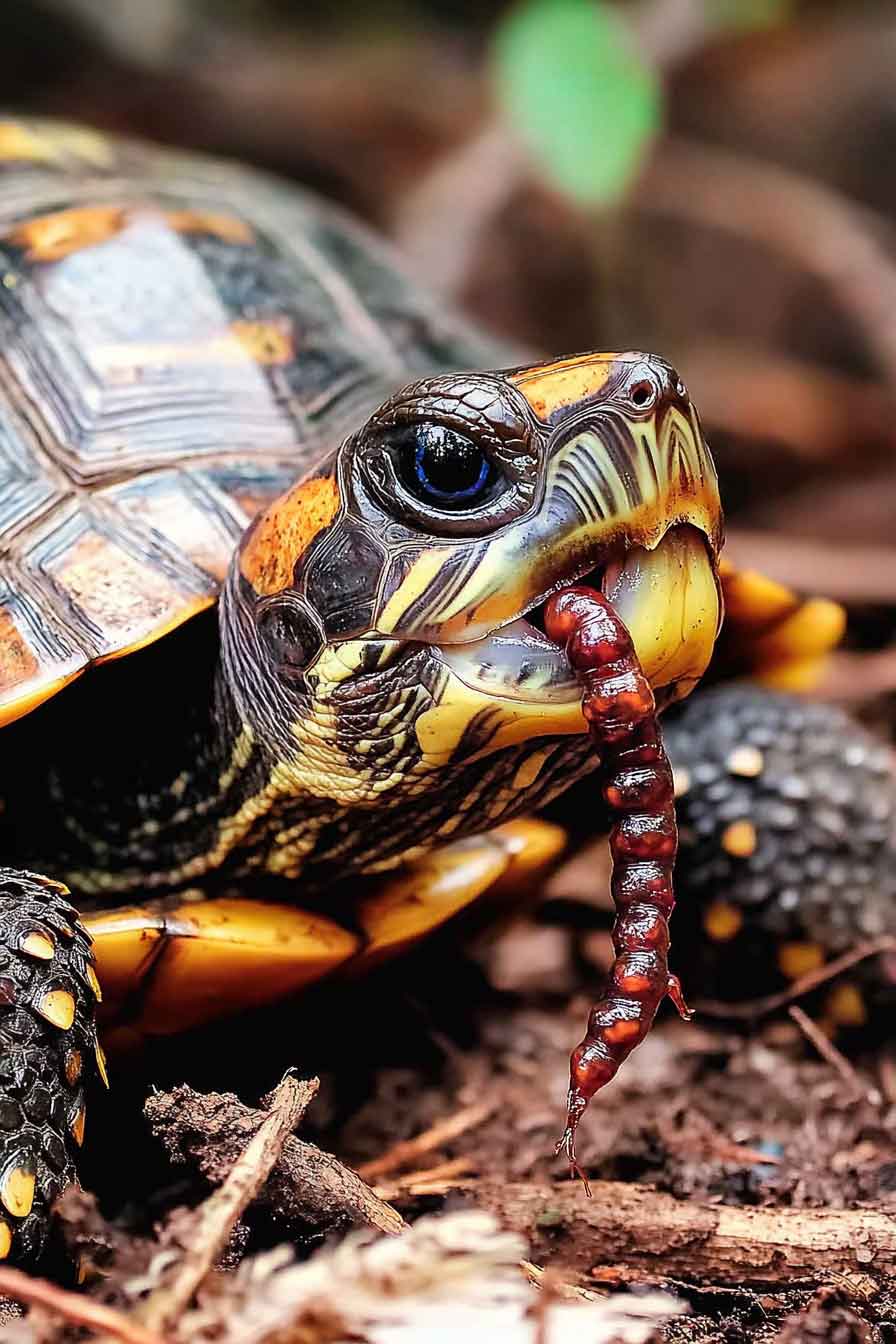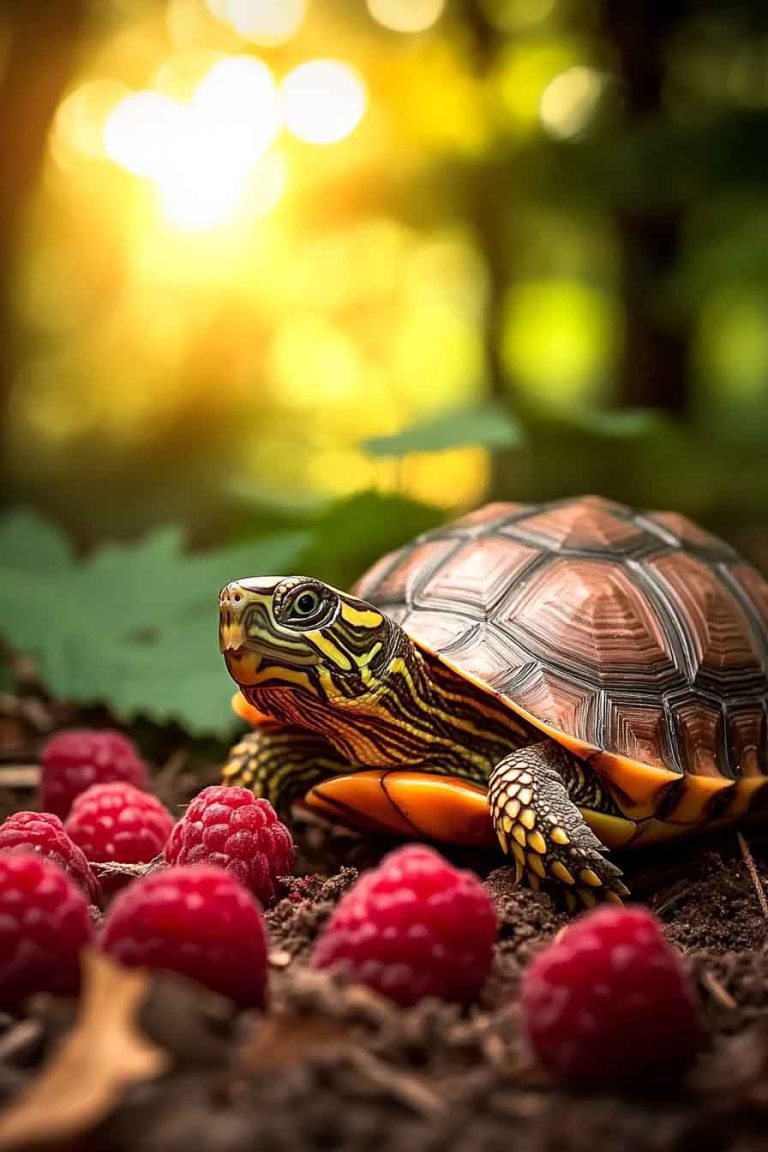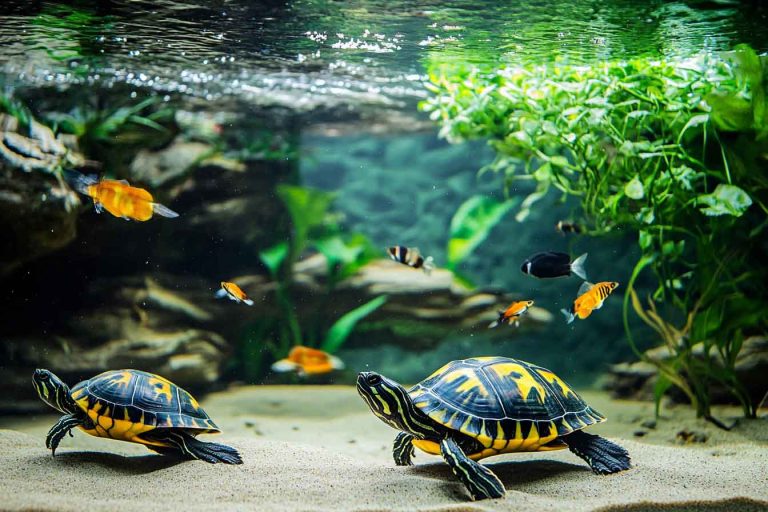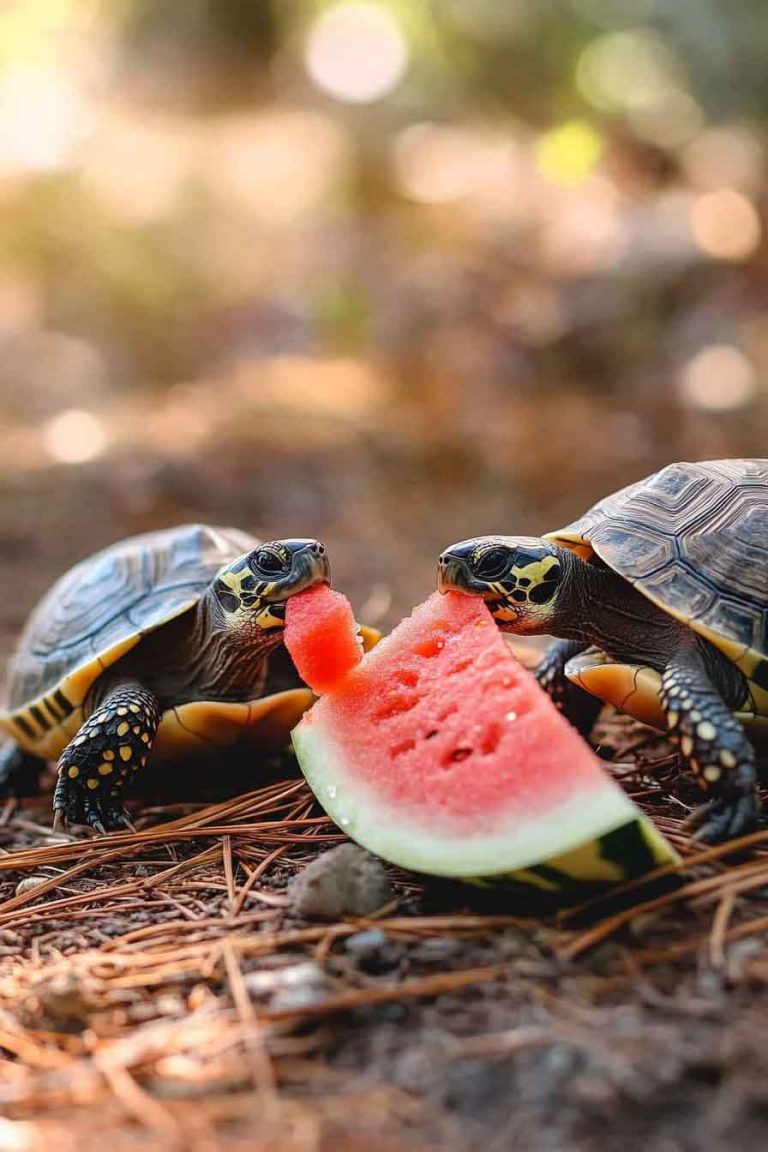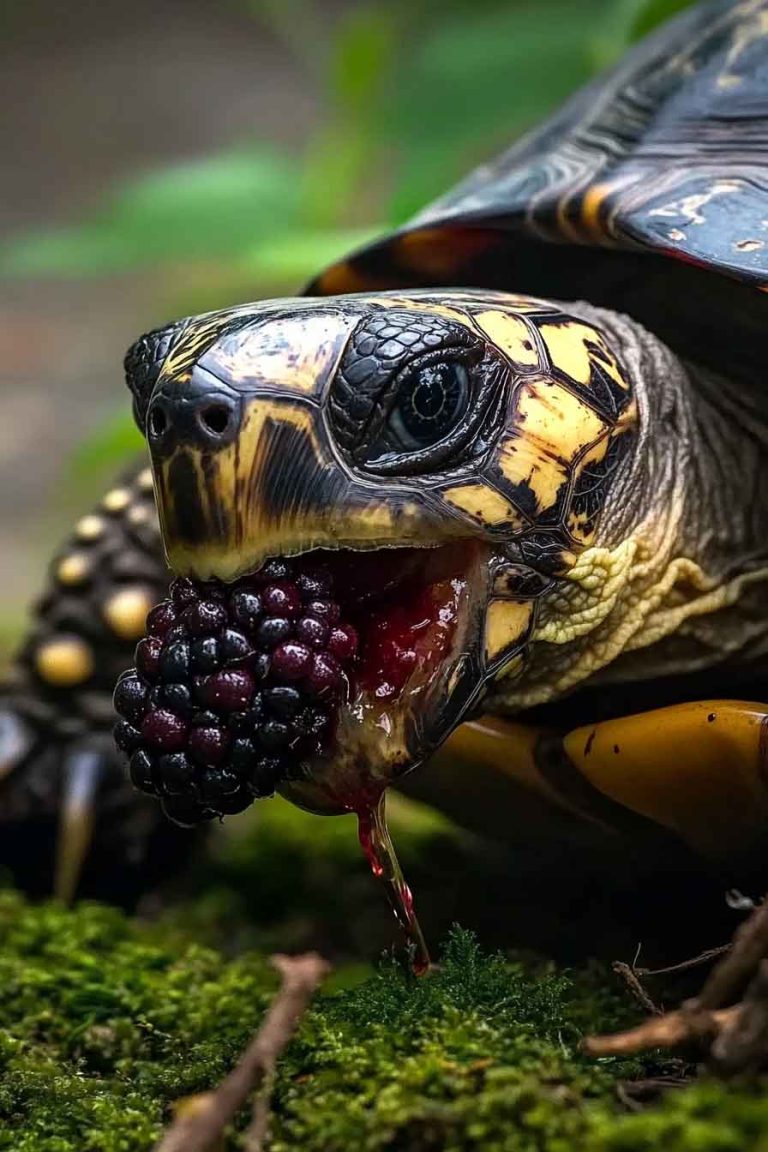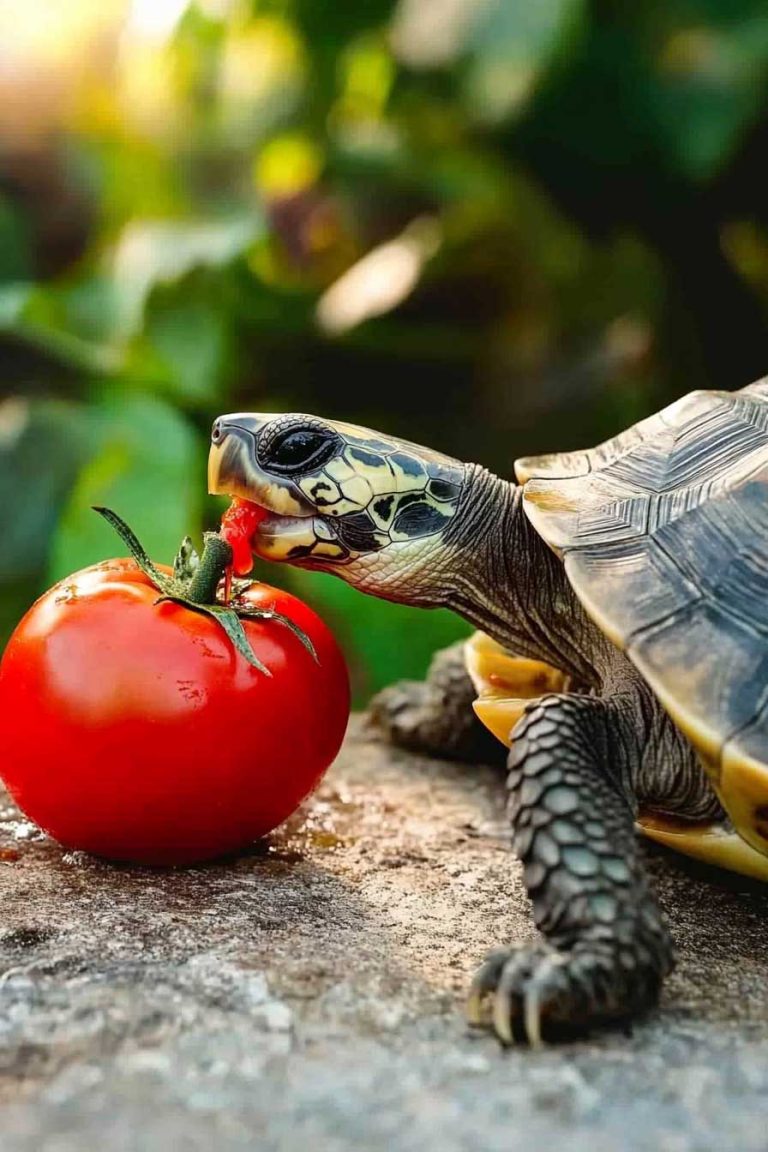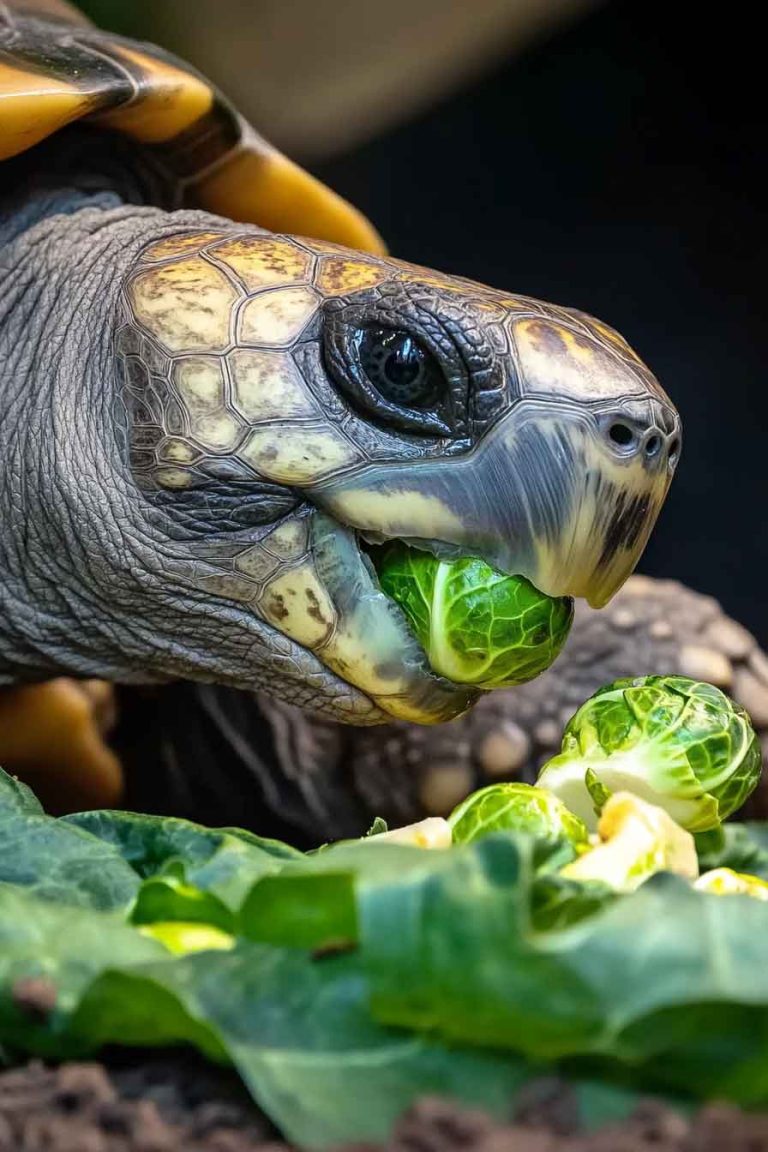Can Turtles Eat Bloodworms? Benefits, Risks & Feeding Tips
If you’re like me and have a pet turtle, you’ve probably wondered about the best foods to keep your shelled friend healthy and happy. I’ve seen many turtle owners asking whether bloodworms are safe for their pets, and it’s a great question that deserves a thorough answer. So, can turtles eat bloodworms? The answer is…
If you’re like me and have a pet turtle, you’ve probably wondered about the best foods to keep your shelled friend healthy and happy. I’ve seen many turtle owners asking whether bloodworms are safe for their pets, and it’s a great question that deserves a thorough answer.
So, can turtles eat bloodworms? The answer is yes – turtles can absolutely eat bloodworms, and they’re actually excellent for them! Bloodworms are a nutritious, protein-rich food that many turtle species love. They’re safe, natural, and provide essential nutrients that support your turtle’s growth and health.
In this article, I’m going to share everything I’ve learned about feeding bloodworms to turtles. I’ll cover the nutritional benefits, how to feed them safely, and answer all the common questions turtle owners have about this popular food choice. Keep reading if you want to give your turtle the best possible diet.
Can You Feed Bloodworms To Your Pet Turtle?
The short answer is – absolutely yes! Unlike some foods that might seem safe but are actually harmful, bloodworms are one of the best protein sources you can offer your turtle. I’ve been feeding bloodworms to my turtles for years, and they not only love them but thrive on them.
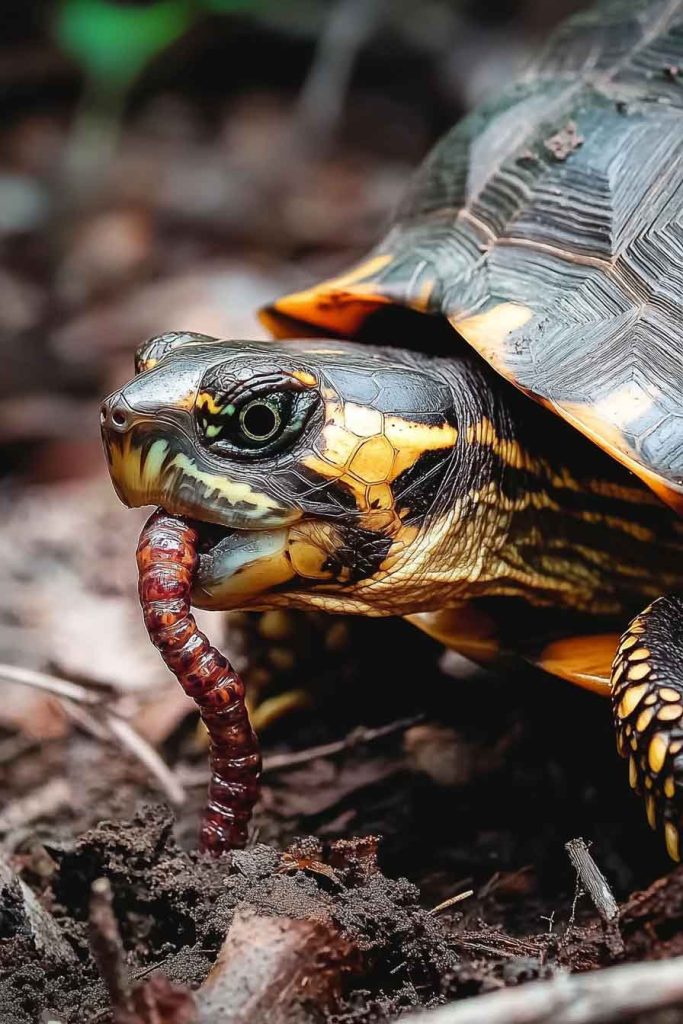
Bloodworms are actually the larvae of midge flies, and they’re found naturally in many aquatic environments where wild turtles would encounter them. This makes them a completely natural food choice that aligns with your turtle’s instincts and dietary needs.
Let me break down the nutritional profile of bloodworms so you can see why they’re so beneficial. Here’s what you’ll find in a typical serving of bloodworms:
Protein: 55-65% Fat: 10-15% Moisture: 75-85% Calcium: 0.3-0.5% Phosphorus: 0.8-1.2% Iron: High levels Amino acids: Complete profile Vitamins: B-complex vitamins
This nutritional breakdown shows exactly why bloodworms are so valuable for turtles. The high protein content supports muscle development and shell growth, while the balanced fat content provides essential energy. The moisture content helps with hydration, which is crucial for turtle health.
What I particularly appreciate about bloodworms is their amino acid profile. They contain all the essential amino acids that turtles need for proper development. This makes them a complete protein source, unlike some other foods that might be lacking in certain nutrients.
The iron content in bloodworms is especially important for turtles, as it helps prevent anemia and supports healthy blood cell production. I’ve noticed that my turtles seem more active and alert when bloodworms are a regular part of their diet.
Do Turtles Like Bloodworms?
In my experience, most turtles absolutely love bloodworms! I’ve never met a turtle that turned down a bloodworm meal. There’s something about their movement and scent that triggers turtles’ natural hunting instincts.
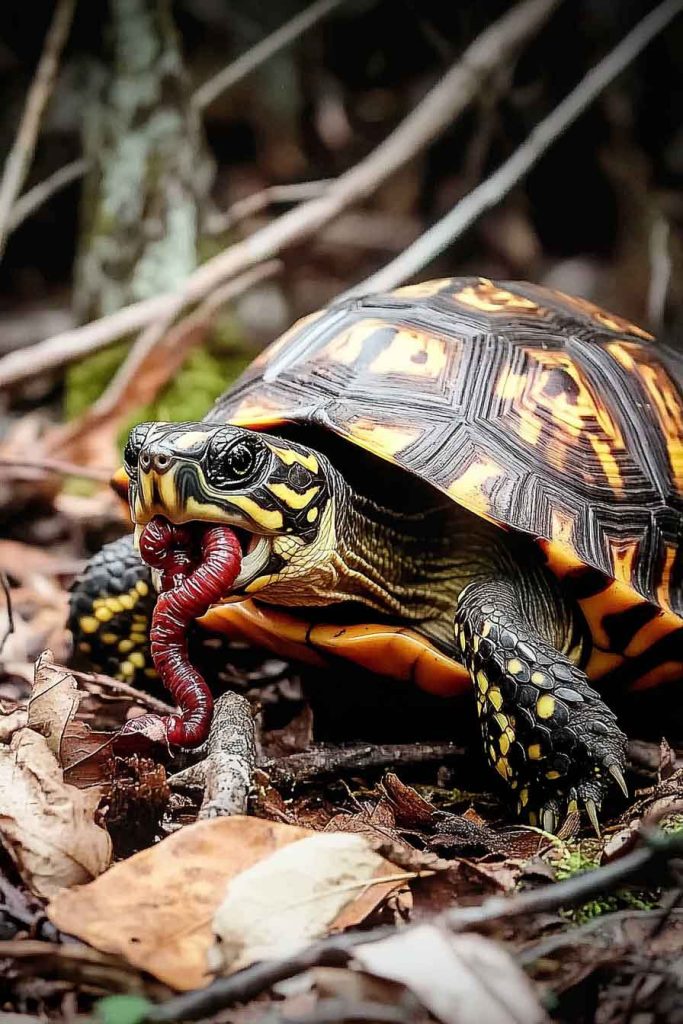
When I first introduced bloodworms to my turtles, I was amazed at how quickly they responded. Even my pickiest eater, who usually ignores new foods, immediately went after the bloodworms with enthusiasm. It’s like watching their wild instincts come alive.
The natural movement of live bloodworms is particularly enticing to turtles. They wiggle and squirm in the water, which triggers the turtle’s predatory response. Even frozen or freeze-dried bloodworms, when rehydrated, retain enough of this appeal to get turtles excited about feeding time.
Health Benefits of Feeding Bloodworms to Turtles
I’ve seen remarkable improvements in my turtles’ health since incorporating bloodworms into their regular diet. Let me share the specific benefits I’ve observed and researched:
Superior Protein Quality
Bloodworms provide what I consider the gold standard of protein for turtles. The protein is highly digestible and contains all essential amino acids. This supports everything from shell development to muscle growth. I’ve noticed that my younger turtles, in particular, show faster and healthier growth when bloodworms are part of their diet.
Enhanced Shell Development
The combination of protein and minerals in bloodworms contributes significantly to shell health. While they’re not extremely high in calcium, the protein helps with calcium absorption and utilization. I always pair bloodworms with calcium-rich foods to maximize this benefit.
Improved Appetite and Feeding Response
One of the first things I noticed when adding bloodworms to my turtles’ diet was how much more interested they became in feeding time. Turtles that were previously reluctant eaters suddenly showed enthusiasm for meals. This improved appetite helps ensure they’re getting adequate nutrition overall.
Natural Foraging Behavior
Feeding live or wiggling bloodworms encourages natural hunting and foraging behaviors. This mental stimulation is just as important as the nutritional benefits. I love watching my turtles actively pursue their food – it keeps them mentally engaged and physically active.
Digestive Health Support
Bloodworms are easily digestible, which makes them excellent for turtles with sensitive stomachs or digestive issues. The high moisture content also aids in digestion and helps prevent constipation, which can be a problem for some turtles.
How to Feed Bloodworms to Your Turtle
Over the years, I’ve developed what I consider the best practices for feeding bloodworms to turtles. Here’s my step-by-step approach:
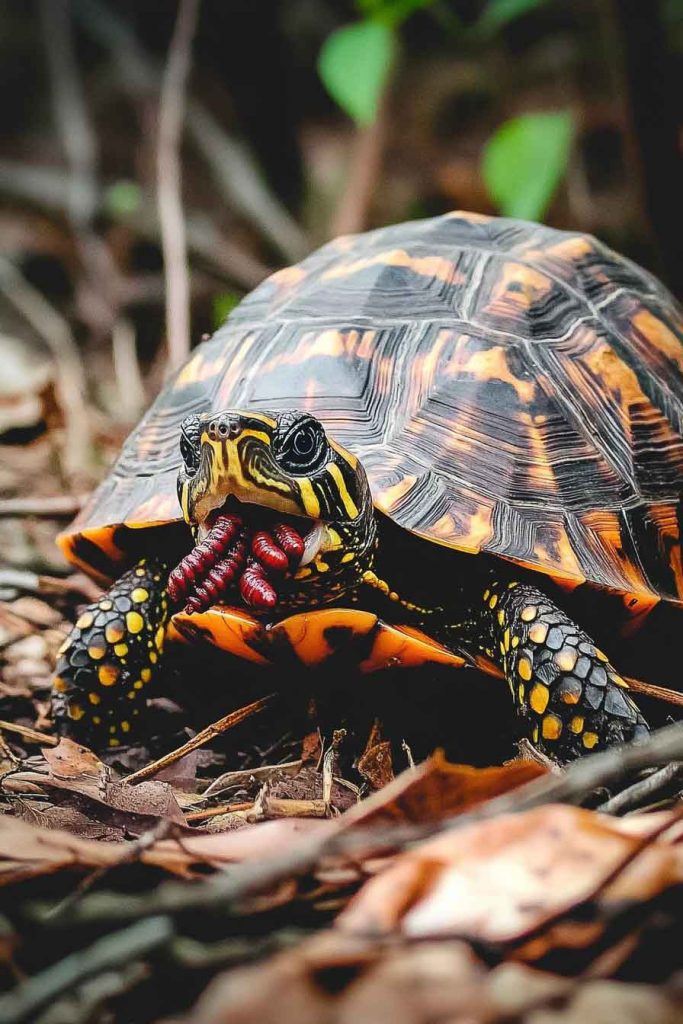
Choosing the Right Type
You have three main options: live, frozen, and freeze-dried bloodworms. I use all three depending on the situation:
- Live bloodworms: These provide the most natural experience and highest nutritional value. I buy them from reputable pet stores and use them within a few days.
- Frozen bloodworms: These are convenient and retain most of their nutritional value. I thaw them in tank water before feeding.
- Freeze-dried bloodworms: These are great for storage and travel. I rehydrate them in water for about 10 minutes before feeding.
Proper Serving Sizes
The amount you feed depends on your turtle’s size and age. Here’s what I recommend:
- Juvenile turtles: 10-15 bloodworms per feeding, 3-4 times per week
- Adult turtles: 20-30 bloodworms per feeding, 2-3 times per week
- Large adult turtles: 40-50 bloodworms per feeding, 2-3 times per week
Feeding Method
I always feed bloodworms in the water, as this mimics the natural environment where turtles would encounter them. I use feeding tongs to place them directly in front of the turtle, which prevents the bloodworms from dispersing throughout the tank.
For multiple turtles, I separate them during feeding to ensure each gets their fair share. Some turtles are more aggressive feeders than others, and I want to make sure everyone gets adequate nutrition.
How Much Bloodworms Should Turtles Eat?
This is one of the most important questions I get from fellow turtle owners. While bloodworms are excellent, they shouldn’t make up your turtle’s entire diet. I follow the 25-30% rule – bloodworms should comprise no more than 25-30% of the total diet.
Here’s the feeding schedule I’ve found works best:
For Growing Turtles (under 2 years):
- Bloodworms 3-4 times per week
- Commercial turtle pellets daily
- Fresh vegetables 4-5 times per week
- Occasional treats like small fish or shrimp
For Adult Turtles:
- Bloodworms 2-3 times per week
- Commercial turtle pellets every other day
- Fresh vegetables daily
- Variety of other protein sources weekly
The key is variety. While my turtles could probably eat bloodworms every day and love it, a varied diet is essential for long-term health. I rotate between bloodworms, commercial pellets, leafy greens, and other appropriate foods.
Can You Feed Bloodworms to Baby Turtles?
Absolutely! In fact, bloodworms are one of the best foods for baby turtles. Young turtles have higher protein requirements than adults because they’re growing so rapidly. Bloodworms provide exactly the kind of high-quality protein they need.
When I’m raising hatchlings, I make bloodworms a cornerstone of their diet. The small size of bloodworms makes them perfect for tiny mouths, and the high protein content supports the rapid growth that occurs in the first year of life.
For baby turtles, I recommend:
- Daily bloodworm feedings for the first 6 months
- 5-10 bloodworms per feeding, depending on the turtle’s size
- Always supplement with appropriate commercial foods and calcium
I’ve found that baby turtles fed regular bloodworm meals grow faster, develop stronger shells, and show better overall health than those fed only commercial diets.
Different Types of Bloodworms and Their Benefits
Not all bloodworms are created equal. Let me share what I’ve learned about the different types available:
Live Bloodworms
These are my first choice when available. Live bloodworms provide:
- Maximum nutritional value
- Natural movement that stimulates hunting instincts
- Freshest possible protein source
- No preservatives or additives
The downside is that they’re perishable and need to be used quickly. I store them in the refrigerator and use them within 2-3 days of purchase.
Frozen Bloodworms
These are incredibly convenient and retain most of the nutritional benefits of live bloodworms. I always keep some in my freezer for regular feeding. They’re:
- Easy to store long-term
- Convenient to portion out
- Still highly nutritious
- Much more affordable than live bloodworms
Freeze-Dried Bloodworms
While not my first choice for regular feeding, freeze-dried bloodworms have their place. They’re:
- Perfect for travel or emergency feeding
- Very long shelf life
- Easy to store at room temperature
- Good backup option
I rehydrate them in tank water for better acceptance and digestibility.
Species-Specific Considerations
Different turtle species have varying dietary needs, and I’ve learned to adjust bloodworm feeding accordingly:
Aquatic Turtles (Red-Eared Sliders, Painted Turtles)
These species absolutely thrive on bloodworms. Their natural diet in the wild includes similar aquatic invertebrates, so bloodworms are perfect. I feed them bloodworms 3-4 times per week as juveniles and 2-3 times per week as adults.
Semi-Aquatic Turtles (Box Turtles)
Box turtles can certainly eat bloodworms, but they’re not as essential to their diet. I offer bloodworms 1-2 times per week, focusing more on their varied omnivorous needs with fruits, vegetables, and other protein sources.
Terrestrial Turtles
While land turtles can eat bloodworms, they’re not a natural part of their diet. I use them sparingly, more as an occasional treat than a staple food.
Potential Risks and How to Avoid Them
While bloodworms are generally very safe, there are a few considerations I always keep in mind:
Overfeeding
The biggest risk is simply feeding too many bloodworms. They’re so nutritious and appealing that it’s easy to overdo it. Stick to the portion guidelines I mentioned earlier.
Quality Control
Always buy bloodworms from reputable sources. Poor-quality bloodworms can carry parasites or bacteria. I only shop at established pet stores or trusted online retailers.
Storage Issues
Improper storage can lead to spoilage and potential health risks. Live bloodworms should be refrigerated and used quickly. Frozen bloodworms should be kept frozen until use and never refrozen once thawed.
Nutritional Imbalance
While bloodworms are excellent, they shouldn’t be the only protein source. I always maintain variety in my turtles’ diets.
Frequently Asked Questions (FAQs)
Can Red-Eared Slider Turtles Eat Bloodworms?
Absolutely! Red-eared sliders are one of the species that benefit most from bloodworms. Their natural diet includes similar aquatic invertebrates, making bloodworms an ideal food choice. I’ve been feeding bloodworms to my red-eared sliders for years with excellent results.
Can Painted Turtles Eat Bloodworms?
Yes, painted turtles do very well with bloodworms. Like red-eared sliders, they’re aquatic turtles that naturally consume similar prey in the wild. Bloodworms support their growth and health beautifully.
Can Box Turtles Eat Bloodworms?
Box turtles can eat bloodworms, though they’re not as critical to their diet as they are for aquatic species. I offer them to my box turtles occasionally as part of a varied diet that includes fruits, vegetables, and other proteins.
Are Live or Frozen Bloodworms Better?
Both have their advantages. Live bloodworms provide maximum nutrition and stimulate natural hunting behaviors, but frozen bloodworms are more convenient and still highly nutritious. I use both depending on availability and circumstances.
How Often Should I Feed Bloodworms to My Turtle?
For juvenile aquatic turtles, I recommend 3-4 times per week. For adults, 2-3 times per week is ideal. Always remember that bloodworms should be part of a varied diet, not the sole food source.
Can Bloodworms Replace Commercial Turtle Pellets?
No, bloodworms shouldn’t completely replace commercial pellets. While they’re excellent protein sources, commercial pellets are formulated to provide complete nutrition including vitamins and minerals that bloodworms alone can’t supply. Use them together for optimal nutrition.
Conclusion
After years of keeping turtles and researching their dietary needs, I can confidently say that bloodworms are one of the best foods you can offer your turtle. They provide high-quality protein, essential nutrients, and mental stimulation through natural foraging behaviors.
The key to success with bloodworms is moderation and variety. They should be a regular part of your turtle’s diet, but not the only component. When combined with quality commercial foods, fresh vegetables, and other appropriate protein sources, bloodworms contribute to a complete, balanced diet that will keep your turtle healthy and thriving.
I encourage you to try incorporating bloodworms into your turtle’s diet if you haven’t already. Start slowly, observe your turtle’s response, and adjust the frequency based on their individual needs and preferences. Your turtle will thank you for it, and you’ll likely see improvements in their overall health, activity level, and feeding enthusiasm.
Remember, every turtle is different, so pay attention to your pet’s individual response and adjust accordingly. With proper feeding practices, bloodworms can be a valuable addition to your turtle care routine for years to come.

